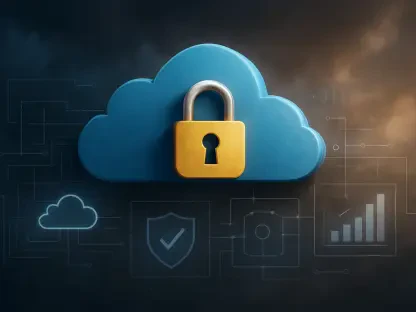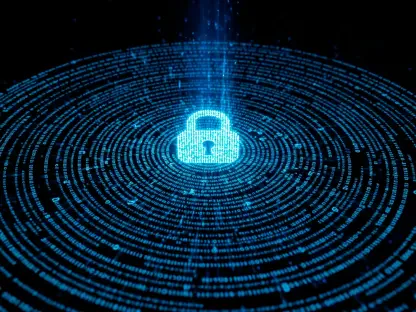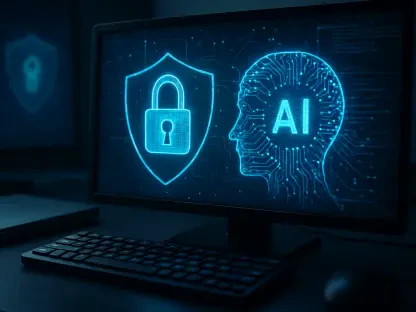Healthcare Chief Information Security Officers (CISOs) face the substantial challenge of fortifying sensitive data against cyber threats while ensuring that patient care remains smooth and uninterrupted. As the healthcare sector embraces digital transformation, balancing these two critical aspects becomes increasingly complex. This article navigates through practical strategies that CISOs can employ to enhance security measures without disrupting the essential workflows of healthcare providers.
Balancing Security and Accessibility
The Importance of Strong Security Measures
Healthcare organizations are confronting a surge in cybersecurity risks, predominantly driven by supply chain attacks and vulnerabilities present within legacy systems. A robust, risk-driven approach to cybersecurity is thus imperative. Strengthening security measures is no longer a matter of option but necessity. By embedding security at every level, including the data, network, and endpoint layers, healthcare organizations can safeguard against various threats. This holistic approach should be backed by continuous monitoring and threat intelligence to preemptively identify and mitigate potential risks.
Instituting detailed cybersecurity frameworks that incorporate guidelines akin to those prescribed by entities such as the National Institute of Standards and Technology (NIST) ensures an overarching security cover. Such frameworks guide healthcare systems in implementing proactive defenses, promoting an environment where sensitive data is vigorously protected against unauthorized access, yet remains readily available to authorized personnel. Continual education and training programs for staff further underpin these measures, fortifying the first line of defense against social engineering attacks and fostering a culture of security awareness.
Ensuring Patient Care Workflows
Ensuring that rigorous security measures do not impede patient care is central to an effective cybersecurity strategy. A member-centric, risk-based approach prioritizes patient safety alongside data security. Adaptive authentication techniques, including risk-based multi-factor authentication (MFA), offer a balanced solution. These methods assess the context of access requests and calibrate authentication requirements accordingly, thereby enhancing security without imposing unnecessary hurdles on healthcare providers.
Real-time data loss prevention (DLP) mechanisms play a vital role in maintaining data integrity and preventing unauthorized data transfers. By leveraging context-aware and role-based access controls, healthcare organizations can ensure that only the right individuals access sensitive data under the right circumstances. Additionally, tokenization and dynamic data masking techniques secure patient information during processing and transmission, further aligning with the dual objectives of ensuring accessibility while mitigating risk.
Enhancing Vendor Risk Management
Integrating Security Controls
Effective vendor management is crucial in the healthcare sector, given the extensive reliance on third-party services. Incorporating comprehensive security controls throughout the vendor lifecycle is essential. This includes initial risk assessments, ongoing evaluations, and continuous oversight. Key components such as vendor segmentation, zero trust deployment, and network segmentation are pivotal. These measures ensure that vendors are only given access to the necessary resources and that unauthorized lateral movement within the network is prevented.
Integrating robust security checks at every stage of the vendor engagement process can significantly minimize exposure to risks. For example, performing thorough background checks and demanding adherence to security controls that adhere to best practices, such as stringent access management and regular audits. Zero trust deployment models further advocate for the principle of “verify before trust,” ensuring that continuous authentication mechanisms secure each access point. Network segmentation, on the other hand, creates clear boundaries within the infrastructure, limiting the impact of potential breaches.
Participation in Cyber Drills
Vendor participation in cyber drills is an often-overlooked strategy that can significantly enhance incident response readiness. These exercises simulate real-world attack scenarios, allowing vendors to test and refine their response protocols. By involving critical vendors in regular cyber drills, healthcare organizations can ensure that both internal and external defenses are coordinated and robust enough to withstand sophisticated cyber-attacks.
During these cyber drills, healthcare organizations can evaluate the effectiveness of their incident response plans and identify any gaps or weaknesses. These simulations provide valuable insights into how well vendors can collaborate during a cybersecurity incident, enabling better alignment and preparedness. Furthermore, regular cyber drills foster a culture of continuous improvement, as lessons learned from each exercise are incorporated into security practices, enhancing resilience against future threats.
Dealing with Legacy Systems
Multi-layered Security Measures
Legacy systems, while integral to many healthcare operations, present unique security challenges due to their outdated architectures. A prudent, multi-layered approach can mitigate the risks associated with these systems. Isolating legacy systems from internet-facing services using techniques such as software-defined perimeters and web application firewalls creates a buffer against known exploits. Employing endpoint detection and response (EDR) solutions alongside AI-driven behavioral analytics adds additional protective layers by monitoring for and responding to anomalous activities.
Such measures provide an immediate response mechanism while also enabling the detection of threats that might otherwise bypass traditional security systems. The layered approach ensures redundancy, so if one defense is breached, others can pick up the slack. This strategy is complemented by regular patching and updating of legacy systems, where feasible, to close known vulnerabilities and maintain a higher security standard, even in aged infrastructures.
Planning for Migration
While multi-layered security measures offer temporary mitigation, transitioning legacy systems to modern infrastructures is critical for long-term security. This migration requires meticulous planning and execution to ensure minimal disruption to ongoing operations. Establishing a clear roadmap that outlines the migration process, complete with timelines and milestones, is imperative. This plan should include a thorough risk assessment of the existing systems, identifying potential vulnerabilities that need addressing during the migration.
Employing a phased approach to migration can help manage the complexities involved. Critical systems should be prioritized, ensuring they are transferred to more secure environments without compromising functionality. Engaging with third-party experts who specialize in legacy system modernization can streamline the process, offering valuable insights and resources to facilitate a smooth transition. The ultimate goal is to create an updated infrastructure that not only meets current security standards but is also adaptable to future technological advancements.
Mergers and Acquisitions Challenges
Structured Due Diligence
Mergers and acquisitions (M&A) introduce substantial cybersecurity challenges, necessitating a structured due diligence process. This process should commence early in the pre-acquisition phase, focusing on both the technical and governance aspects of the target company’s security posture. A comprehensive assessment that includes penetration testing, vulnerability scanning, and reviewing the target’s compliance with security standards helps identify potential risks.
This thorough approach ensures that acquiring entities are aware of the security liabilities they might inherit. The findings from due diligence inform the development of a robust integration plan that aligns with the acquirer’s security policies and standards. Engaging with cybersecurity experts during this phase can provide additional insights and recommendations, contributing to a more accurate risk assessment and integration strategy.
Post-acquisition Strategies
Following an acquisition, adopting a “breach assumption” practice ensures that new systems are secured before integration with the parent company. This practice involves meticulously rebuilding security controls to meet acceptable standards, effectively creating a clean slate. Conducting a comprehensive security review, including penetration testing and system hardening, is integral to this process.
Such proactive measures mitigate the threat of inherited vulnerabilities, ensuring that the newly integrated systems do not become potential targets for cyber-attacks. Additionally, continuous monitoring and security assessments post-integration help maintain a secure environment. Regular training and awareness programs for staff within the acquired entity further reinforce the importance of cybersecurity, aligning with the overall objective of maintaining robust, cohesive security controls across the unified organization.
Utilizing Data Devaluation
Tokenization and Encryption
Data devaluation strategies significantly reduce the impact of potential breaches by rendering data unusable to unauthorized entities. Techniques such as tokenization and encryption are at the forefront of these efforts. Tokenization involves replacing sensitive data with non-sensitive placeholders, while encryption transforms data into unreadable code without the correct decryption key. These methods ensure that even if attackers access the data, it remains meaningless and unusable.
Implementing these techniques across all data storage and transmission processes fortifies data against breaches. Tokenization is particularly effective in protecting sensitive information like patient details, while encryption safeguards data during electronic transactions and storage. By making data inherently less valuable to attackers, healthcare organizations can drastically reduce the consequences of potential data breaches.
Implementing Robust Key Management
Effective key management practices are crucial in reinforcing encryption efforts. This involves generating, storing, distributing, and revoking encryption keys in a secure manner. Employing hardware security modules (HSMs) ensures that keys are protected by physical and logical safeguards. Automated key management solutions further enhance security by minimizing human errors and ensuring that encryption keys are regularly rotated and updated.
Robust key management practices prevent unauthorized access to encryption keys, thereby safeguarding encrypted data. Regular audits and compliance checks ensure that these practices adhere to established security protocols and standards. By investing in strong key management infrastructure, healthcare organizations can bolster their overall security posture, making it considerably more difficult for attackers to decrypt sensitive data.
Moving Toward Comprehensive Security
Healthcare Chief Information Security Officers (CISOs) face the formidable challenge of safeguarding sensitive patient data from cyber threats while ensuring that healthcare providers can deliver patient care smoothly and without interruption. As the healthcare sector continues to adopt digital technologies and undergo digital transformation, balancing these two crucial responsibilities becomes increasingly intricate. This article explores practical strategies for CISOs to enhance security measures while maintaining the essential workflows in healthcare environments. By implementing effective cybersecurity protocols, providing regular staff training, and fostering a culture of security awareness, CISOs can protect patient data without disrupting care delivery. Additionally, leveraging advanced technologies such as artificial intelligence and machine learning can help monitor and mitigate potential threats in real-time. With a comprehensive approach to cybersecurity, CISOs can achieve a balance between protecting sensitive information and supporting uninterrupted and high-quality patient care.









